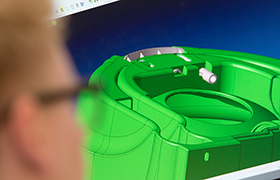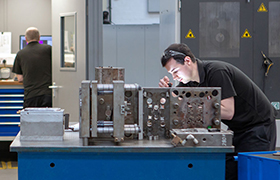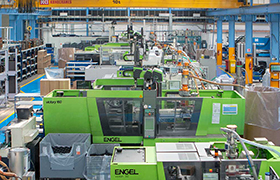PLASTICS ADDITIVES – FOAMING/BLOWING AGENTS
There may be occasions when it is desirable to reduce the weight of a thick sectioned injection moulding. Alternatively, it might be necessary to reduce the warping of a moulding or eliminate the sink marks, caused by ribs and bosses on a conventional or thin walled moulding.
In certain circumstances gas assisted moulding can be used but where this is not possible or is not economically viable, foaming or blowing agents can provide an alternative solution. The result of using these chemical additives is a foam structure to the material.
Please Note: This page is for information purposes only. Rutland Plastics is an Injection Moulder and does not supply plastics additives.


PROCESS
The degree to which the material is foamed is controlled by the amount of agent used. To eliminate sink marks and warping very small amounts are added with little evidence of a foam cell structure within the part.
For thick sectioned parts where weight reduction may be the aim, more agent is added with the result that the internal structure of the part has much larger and a greater distribution of cells. The more foaming agent that is added during the moulding process, the greater the likelihood is of the surface texture of the part being affected. This is because the bubbles break through the ‘skin’ of the moulding.
In reality the foaming effect is not as great as this, but this picture serves as an illustration of the internal form.
TYPES OF AGENT
There are two main types:
- Weight reduction
- Raw material savings
- Elimination of warping
- Elimination of sink marks
- Increase in wall stiffness
- Cycle time reduction (endothermic)
Amorphous polymers (Styrene, Polycarbonate, Acrylic, SAN, ABS, PVC) tend to blow more easily than semi-crystalline (Polypropylene, Polyethylene, Nylon, Acetal, Polyesters).






